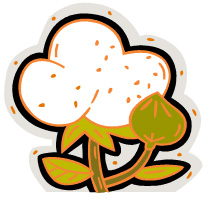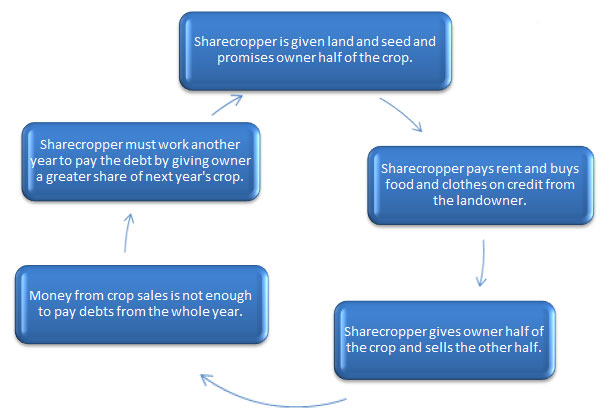 The depression that surrounded the Panic of 1873 affected more than the people who worked for the railroads and the rising industrial centers in the cities. They were mostly concentrated in the North. It also greatly hurt farmers, particularly the cotton farmers in the South. A large percentage of those farmers were newly freed slaves.
The depression that surrounded the Panic of 1873 affected more than the people who worked for the railroads and the rising industrial centers in the cities. They were mostly concentrated in the North. It also greatly hurt farmers, particularly the cotton farmers in the South. A large percentage of those farmers were newly freed slaves.
From 1872-1877, the price of cotton fell by 50%. This made the common economic arrangement between former slave and former master after the Civil War – sharecropping – a disastrous deal for the freedman and almost guaranteed him a lifetime of poverty and debt.
Raw Deal
After the Civil War, the primary economic skill that former slaves had was farming. However, they normally couldn’t afford land to farm. Instead, they struck a deal with a landowner, often a former master.
Under this deal, the farmer would rent a plot of land to grow crops. Then, when the crops were harvested and sold, he would give the landowner a percentage, often half, of the crops grown. In addition, the farmer would frequently have to rent his house from the landowner plus borrow money for farming equipment, seed, and food and pay the landowner back with the money earned from selling the half of the crop he could keep.
In practice, sharecroppers did not make enough money from the half of the crops they could keep, placing them into debt and an endless cycle of poverty.

Sharecropping Simulation
 Go to this sharecropping simulation and make choices as a sharecropper to try and earn a profitable crop.
Go to this sharecropping simulation and make choices as a sharecropper to try and earn a profitable crop.
Run it a few times, making difference decisions. When you finish, answer the reflection questions below:
-
As a sharecropper, were there more scenarios in which you made a profit or more scenarios in which you ended up more in debt? Did you ever make a lot of money?
Interactive popup. Assistance may be required. Click for the answer
-
Which of the choices in the simulation most reflects the effects of the Panic of 1873?
Interactive popup. Assistance may be required. Click for the answer
-
The amount of debt that sharecroppers amassed kept them tied to the land trying to have enough good years to pay off the landowner, which frequently never occurred. This has led many people to call sharecropping “worse than slavery.” Why was that?
Interactive popup. Assistance may be required. Click for the answer
 The depression that surrounded the Panic of 1873 affected more than the people who worked for the railroads and the rising industrial centers in the cities. They were mostly concentrated in the North. It also greatly hurt farmers, particularly the cotton farmers in the South. A large percentage of those farmers were newly freed slaves.
The depression that surrounded the Panic of 1873 affected more than the people who worked for the railroads and the rising industrial centers in the cities. They were mostly concentrated in the North. It also greatly hurt farmers, particularly the cotton farmers in the South. A large percentage of those farmers were newly freed slaves. 
 Go to this
Go to this 